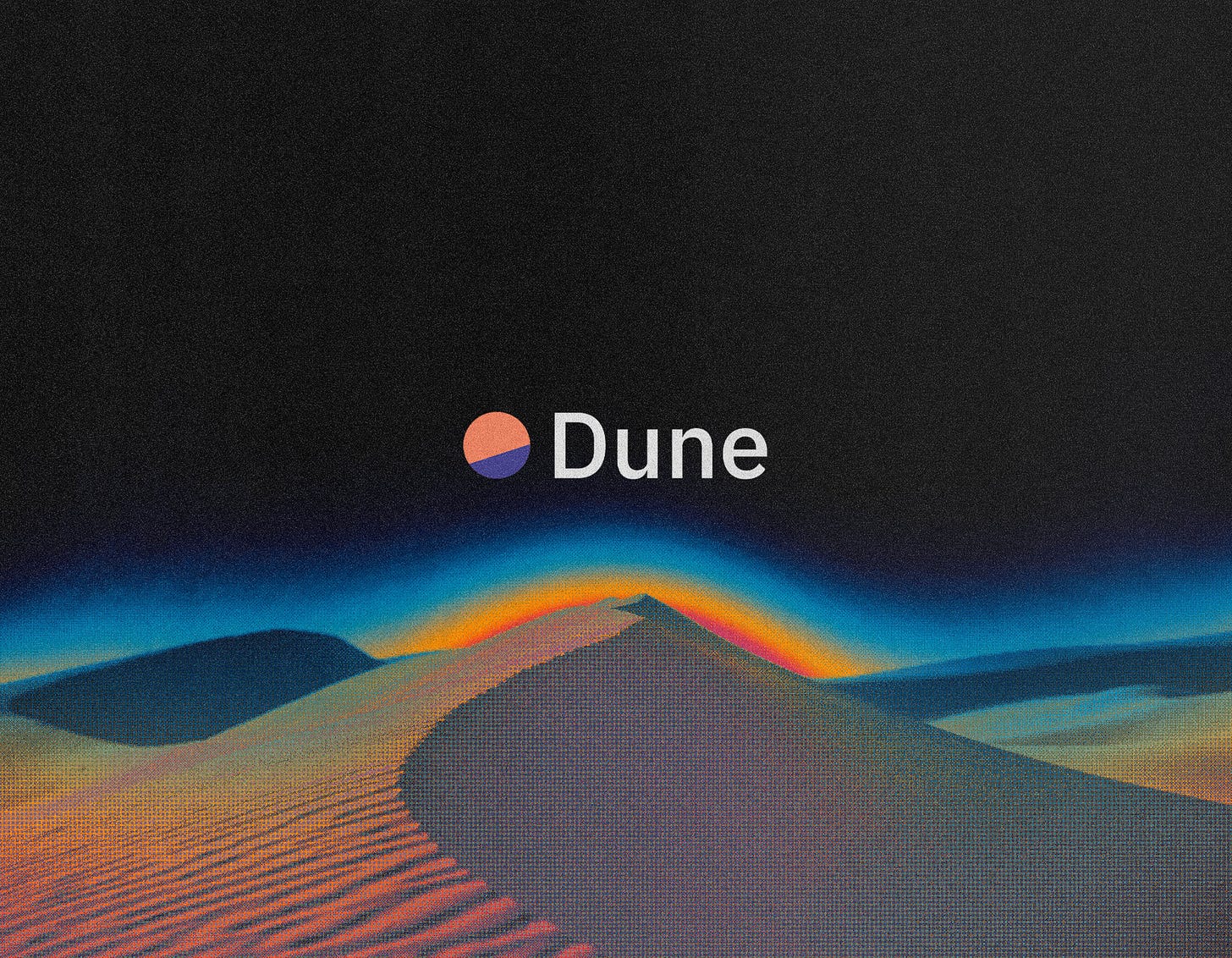Dune: The Data Must Flow
Crypto’s leading analytics platform is a tamer of blockchain information. It’s also a portal to a new kind of economic empowerment.
Actionable insights
If you only have a couple of minutes to spare, here's what investors, operators, and founders should know about Dune.
Run lean, and persevere. If Dune’s burn rate had been higher, the company almost certainly would have failed in the dead of crypto winter. Instead, founders Fredrik Haga and Mats Olsen spent con…

